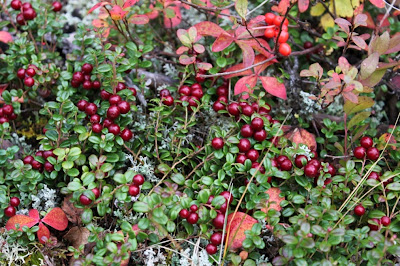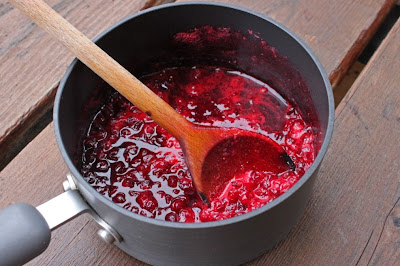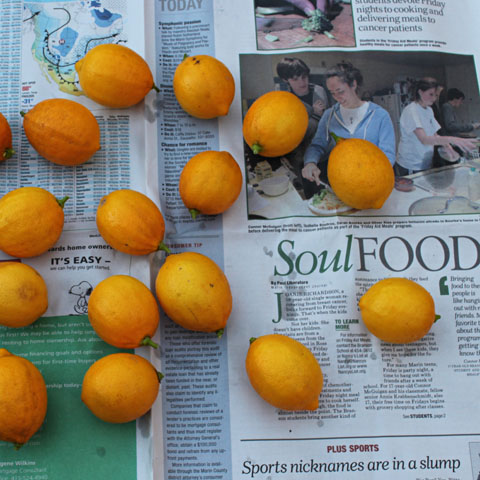 |
| Wilderness preserving experiments — cranberry applesauce front and center |
I’ve had this simple recipe in my pocket since we got back from Alaska in September. At the end of August, we had a forest of lowbush cranberries (aka lingonberries) to pick around our cabin, but I thought I’d wait to post this until regular cranberries were available here in the Lower 48. Highbush, lowbush, or in between — if it walks or talks like a cranberry, you can toss it into applesauce to give it a little bit of tart and a whole lot of pink.
 |
| You say lingonberry, I say lowbush cranberry. Or the other way around. |
It’s easy to expand this method to accommodate the number of apples you have on hand. My batch is a small one — just a cup of cranberries and six big apples — because when we were getting ready to say goodbye to our big tundra valley, I peered into the cold hole (check out this post for a picture of our in-ground “fridge”) and six big apples were what we had left. There was no sense packing them up and taking them for a helicopter ride, so I sauced them up, put them in a jar, and left them at the cabin for us to eat next year.
Since I’ve been home, I’ve made about five more quarts of the stuff. S’good.
 |
| Low-bush crans in a pan |
Lowbush Cranberry Applesauce
1 cup lowbush cranberries (or any other kind)
6 large apples
¾ cup water
2 tablespoons lemon juice
1 cup sugar, or to taste
½ teaspoon pumpkin pie spice
1. Sterilize your jars.
2. Rinse the cranberries and put them in a small saucepot with enough water to almost cover them. Boil the cranberries until skins pop, then put them through a food mill to make a puree. Set aside.
3. Combine the water and lemon juice in a large nonreactive pot. Roughly chop the apples (without peeling or coring them), remove the stems, and put the apples in the pot with the lemon water. Bring the liquid to a boil, then turn down the heat and simmer the apples until they’re soft and pulpy, about 20 minutes. (It may take longer if you’re using a lot more apples.)
4. Put the apple mixture through the food mill, then put the resulting puree into your big pot. Add the cranberry puree, sugar, and pumpkin pie spice (of course you can use other spices: cinnamon, ginger, allspice, cloves, nutmeg – ancho chile pepper — anything you like) to taste. Stir to dissolve the sugar, then heat the sauce until it’s piping hot.
5. Pack the hot applesauce into your sterilized jars, leaving ½-inch head space. Run a small silicone spatula or chopstick around the inside of the jar to release any air bubbles, clean your jar rims if necessary, then put on the lids.
6. Process in a water-bath canner. Because of altitude at the cabin, I added 5 minutes to the ordinary 10-minute processing time and processed for a total of 15 minutes.
This little batch yields about 5 half-pint jars, which make great desserts at the cabin: We pop the lids, add a squirt of whipped cream, and eat our apples straight from the jar. When you have to boil water to do dishes, why dirty an extra one?
Finally, speaking of applesauce, I want to share one last photo. Doesn’t this applesauce cake kinda look like hell? But don’t you feel kinda impressed if I tell you I made it in a dutch oven on top of a woodstove? Some of you probably know all about woodstove cooking, but I’ve just started learning.You start to do crazy things when you have thirty pounds of sugar and no oven . . .
 |
| Wilderness baking experiment — woodstove applesauce cake, the first. |




